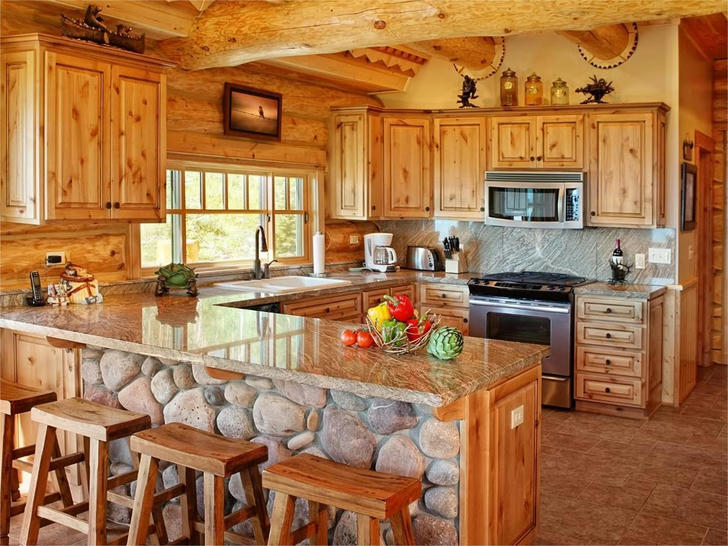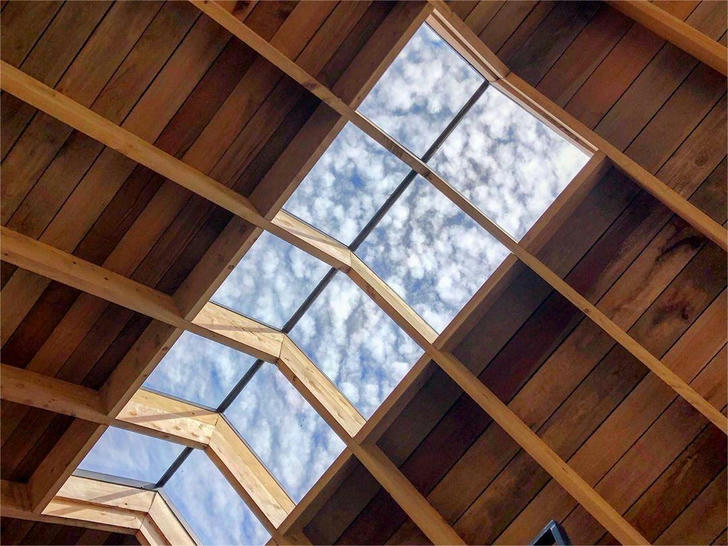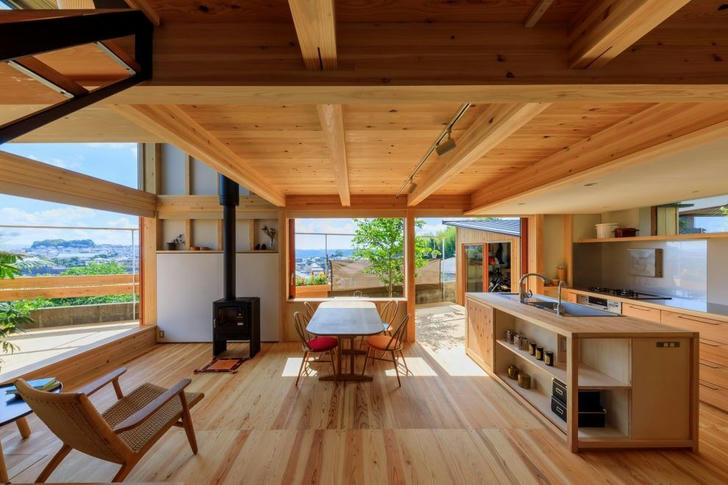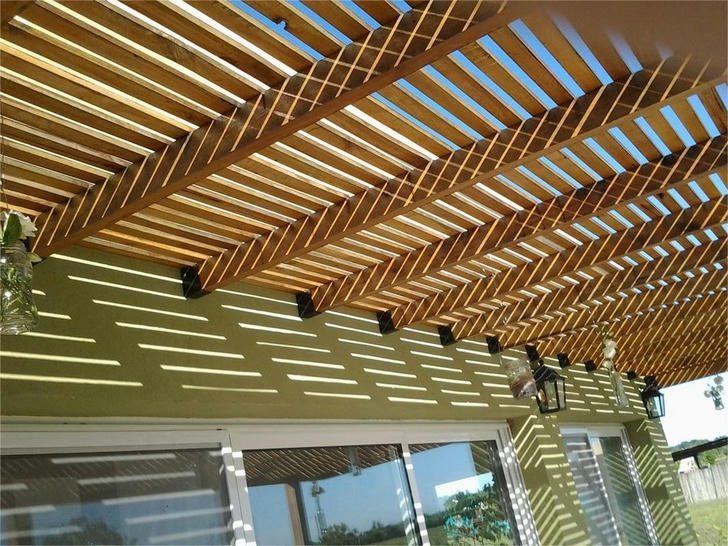Designing Daylighting for a Single-Story Log Cabin to Create a Bright and Inviting Home
In architectural design, daylighting is one of the most critical elements. For a single-story log cabin, the right daylighting design can bring ample natural light into the interior, enhancing the space’s comfort and creating an inviting atmosphere. Good daylighting design can significantly improve the quality of living by making every corner of the log cabin feel bright and airy. This article will explore how to design the daylighting in a single-story log cabin to ensure your cabin is not only aesthetically pleasing but also functional and filled with natural light.

1. Basic Principles of Daylighting Design

The primary goal of daylighting design is to maximize natural light intake through proper window placement, skylight design, and space planning. This not only helps reduce energy consumption but also improves the quality and comfort of living. In the design of a single-story log cabin, particular attention should be paid to the following aspects:
Proper Window Placement: Windows are the main way natural light enters the cabin, and the strategic placement of windows ensures light reaches every room.
Optimizing Roof Design: The design of the roof plays a crucial role in the light permeability of the cabin. Choosing the right roof type and materials can maximize sunlight entry.
Space Layout and Daylighting Integration: An open floor plan allows for light to move freely, eliminating dark corners and ensuring adequate lighting in all rooms.
2. Window Design: Maximizing Natural Light Intake
Large Window Design In the design of a single-story log cabin, the size and placement of windows are key factors in how much light enters the space. Particularly in high-traffic areas such as the living room, dining room, and bedrooms, designing large windows allows sunlight to flood in. Large windows not only increase interior brightness but also create a sense of space, making the cabin feel more expansive.
For instance, in one log cabin design, a large window in the living room faces the southeast, allowing morning sunlight to stream in and fill the room with warmth. This design not only makes the living room bright but also reduces the need for artificial lighting in the early hours.
Window Orientation When it comes to window orientation, the southeast direction is typically considered optimal. Southeast-facing windows allow soft morning light to enter, which is especially important during winter. The morning sunlight helps warm up the cabin and reduce heating costs. In contrast, west-facing windows may experience direct sunlight in the afternoon, which can lead to overheating and discomfort. For example, a bedroom window in a log cabin faces southeast, allowing warm sunlight to gently pour into the room every morning, making the space feel cozy and bright. The designer deliberately chose this direction to avoid the harsh afternoon sun from the west.
Window Size and Wall Proportion

The size of the windows and the proportion of the wall also matter. Too small windows may not provide enough light, while too large windows might compromise structural stability. Designers typically determine window size based on the wall thickness and room dimensions. The window size should maintain a harmonious ratio with the wall to avoid imbalances.
For instance, in a particular log cabin design, the windows in the living room and kitchen are relatively large to ensure enough light fills these frequently used areas. On the other hand, the bedroom windows are slightly smaller, providing adequate lighting without sacrificing privacy.
3. Skylight Design: Bringing Sunlight from Above
Skylight design is an incredibly effective way to increase the natural light in a cabin. Installing skylights in the roof can direct sunlight into the interior, which is especially useful for rooms like the kitchen, bathroom, and hallways, where lighting can be insufficient.
Advantages of Roof Skylights

Installing skylights in the roof allows direct sunlight to enter the space, which is particularly helpful when the room’s exterior walls do not have the option for larger windows. Skylights also ensure that sunlight isn’t blocked by nearby buildings or trees, guaranteeing a steady flow of natural light.
For example, in one cabin design, a skylight in the kitchen solved the issue of limited light caused by the room’s location. The sunlight entering through the skylight made the kitchen feel more open and bright, improving both its functionality and ambiance.
Combining Sloped Roofs with Skylights For log cabins with sloped roofs, installing skylights on the angled surface is an excellent option. This design maximizes light intake while preventing the roof and skylight from directly facing the sun. The angled skylights allow sunlight to enter at a slanted angle, providing soft and even illumination throughout the room.
For example, in another log cabin design, a sloped roof with skylights helped bring in natural light without overheating the space. The skylights were positioned at an optimal angle to allow sunlight to enter gently and evenly.
4. Space Layout and Daylighting Integration

Effective space layout is essential for ensuring good daylighting in the cabin. An open floor plan minimizes walls and partitions, allowing light to circulate freely throughout the space. This is especially important in a small log cabin, where every inch of space counts.
Open Floor Plan Design In many log cabin designs, the living room, kitchen, and dining room are often designed with an open floor plan. This layout maximizes the flow of natural light, as there are no walls blocking the light from entering different rooms. For instance, in a particular cabin design, the living room and dining area are seamlessly connected, with sunlight streaming through large windows and skylights, creating an open, airy feel.
Transparent Partitions and Glass Walls In areas that require some separation but still need to allow light to flow through, transparent partitions or glass walls are ideal choices. This allows light to pass between spaces while maintaining privacy. Using glass walls enables sunlight to flow into different rooms, preventing dark corners from forming.
For example, in another log cabin design, a glass partition between the living room and the bedroom allowed light to flow freely while ensuring privacy. This design kept the spaces bright and connected without compromising personal space.
5. Exterior Wall and Roof Material Choices
The materials chosen for the exterior walls and roof play a significant role in how light is reflected and absorbed. Opting for lighter-colored materials can help reflect sunlight, making the cabin feel brighter during the day.
Light-Colored Exterior Walls Using light-colored exterior materials, such as white, beige, or light gray, can help reflect more sunlight, ensuring that the interior remains bright. In contrast, dark-colored walls absorb sunlight, which could make the interior feel darker, especially when there are fewer windows.
For example, in one cabin design, the choice of light beige exterior paint helped reflect sunlight, making the interior feel brighter and more inviting. This simple change in color enhanced the cabin's overall daylighting quality.
Transparent Roof Materials In sunrooms or areas that need plenty of natural light, transparent or translucent roofing materials, such as polycarbonate or glass, can be used. These materials allow maximum sunlight to filter into the space, making it feel brighter and warmer.
6. Shading and Privacy Design

While maximizing natural light is essential, it is equally important to prevent excessive sunlight from overheating the interior or causing discomfort. Proper shading design is necessary to control the amount of sunlight entering the cabin.
Exterior Shading Design Exterior shading, such as sunshades or awnings, can help block intense sunlight, preventing the interior from becoming too hot. Blinds or curtains inside can also be adjusted to control the amount of light entering the room, maintaining comfort.
Plant Shading Design Planting vines or small trees around windows can provide natural shading and privacy while also enhancing the cabin's aesthetic appeal. In the summer, these plants can help block excessive sunlight, creating a more comfortable environment indoors.
Conclusion
To improve the daylighting in a single-story log cabin, designers need to consider the strategic placement of windows, roof design, space planning, and the selection of exterior wall and roof materials. By employing thoughtful design strategies, it is possible to maximize the intake of natural light, creating a bright, comfortable, and inviting living space. Effective daylighting design not only improves the aesthetic value of the cabin but also provides residents with a better quality of life, reducing reliance on artificial lighting and enhancing the overall atmosphere of the cabin.
